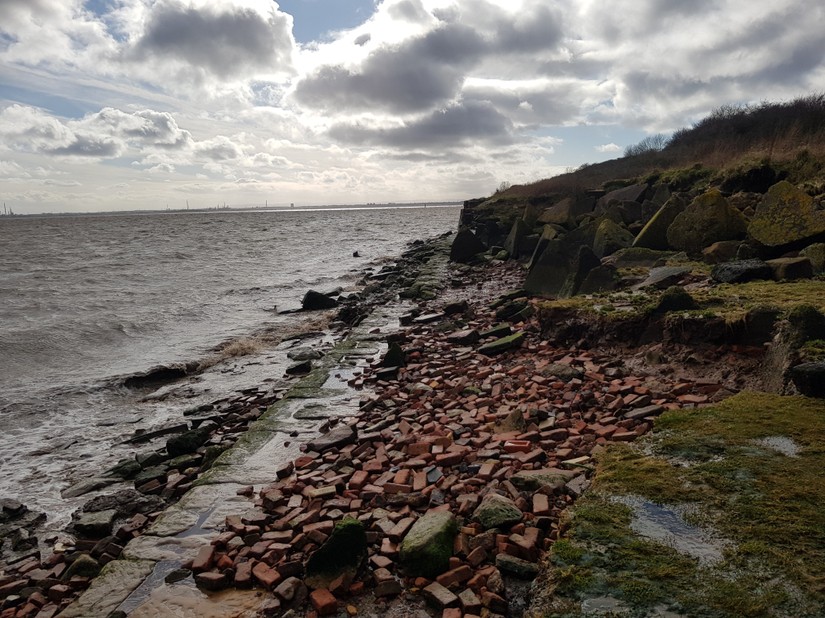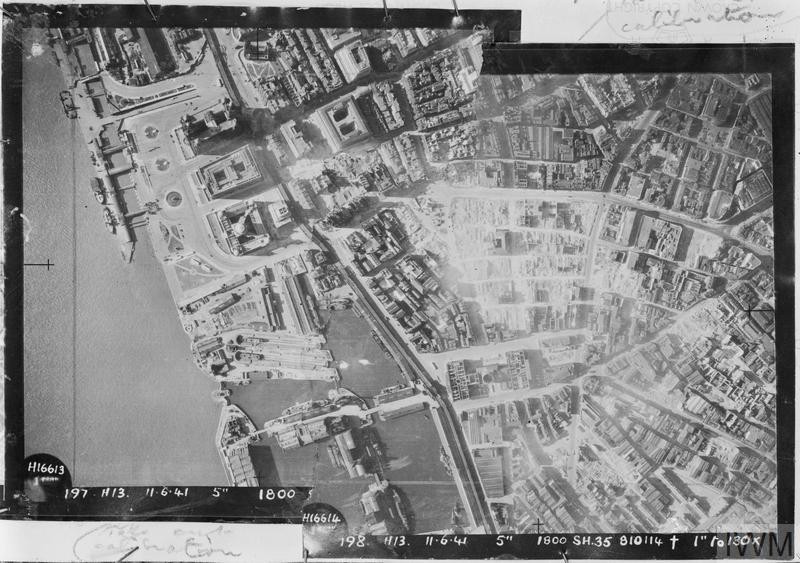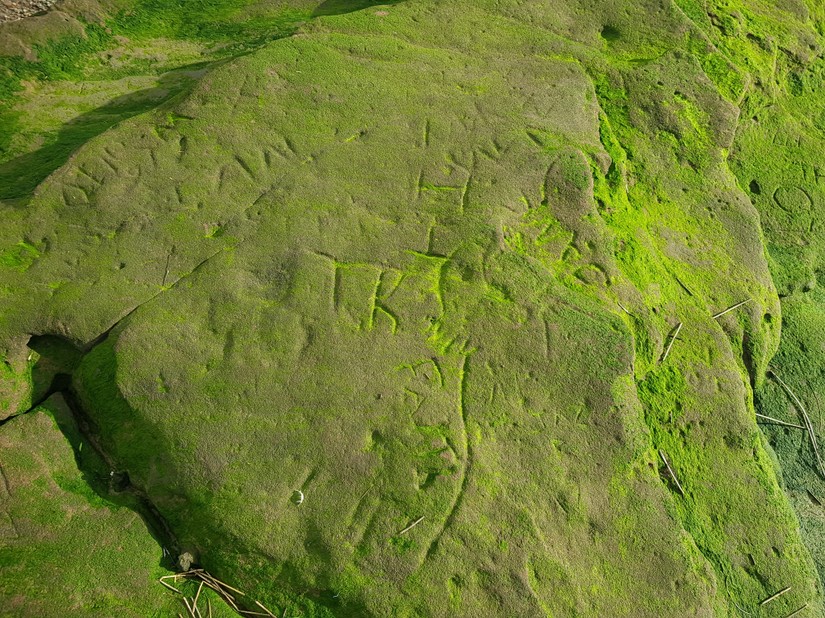Intrigue at Dungeon Lane
23/04/2020 | Andy Sherman
Back in February when we were all allowed outside for more than an hour at a time, we were contacted by a London Mudlarker - Oldfatherthames - who'd been walking along the Mersey and seen something interesting. Did we know what it was? Could we help her find out a little more about it? On a first look the object spotted by Oldfatherthames looks like it could be an early post-medieval grave maker, perhaps from the 16th or 17th century. But is it?
Oldfatherthames spotted a rectangular carved stone, sitting among some building rubble on the foreshore. The stone measured 54 centimetres in length with a width of 30 centimetres and depth of 25 centimetres. Carved into the upper surface of the stone was a skull and crossed bones. Underneath this motif was three lines of initials TN, LN and RN engraved above each other.

The carved stone was found on an eroding piece of foreshore at the bottom of Dungeon Lane, a short distance southeast of Liverpool's John Lennon Airport. This part of the Mersey riverside is now covered by scrubby woods and rough grassland, but in the 18th and 19th century the area was busy with industry. The Ordnance Survey's mid-19th century six inch - one mile map (surveyed 1846-1848, published 1849) shows the site was occupied by the Dungeon Saltworks. The earliest surviving reference to salt production at Dungeon comes in 1692, when the works were described as "in production". The remains of a sandstone quay built for the saltworks can still be seen on the foreshore. The 1895 Ordnance Survey mapping shows the industrial building now labelled as a stoneworks with two, small open reservoirs located just to the east of the building. By the end of the 19th century the sandstone quay was used as ship-breaking yard, which went out of business in 1912. Could the stone be related to any of these activities? It could be, but it seems a slim chance.

During the 20th century demolition material was dumped on the foreshore in an effort to prevent the riverbank eroding, some of this rubble probably came from blitz clearance after World War Two. Could the stone have been dumped on the foreshore along with this demolition rubble? It's a distinct possibility. During the Liverpool blitz two churches with their origins in the medieval period were damaged by the bombing; St Mary's Church, Rice Land, Walton-on-the-Hill and the Church of our Lady and Saint Nicholas in central Liverpool. St Nicholas' was hit by incendiary bombs during an air raid on the 21st December 1940 and largely destroyed by fire, while St Mary's was hit by incendiary bombs in 1941 and heavily damaged. When the rubble from the blitz was cleared around these churches it is easy to imagine that a damaged grave marker might have been swept up in the clearance and then deposited on the foreshore with the rest of the rubble.

However, when you take a closer look at the stone it looks a little unusual for a grave marker. The stone looks too large and unfinished to be a fully formed grave marker; while the lettering hasn't been craved very neatly with none of the letters lining up with the row above and the entire carving isn't centred in the middle of the stone block. On balance this perhaps suggests that it isn't a formal grave marker, although it could be a unofficial marker or memorial to someone. And our project leader, Gustav, has suggested that it might be a memorial to sailors lost at sea.
There is another possibility though, sandstone naturally outcrops along the riverbank here, from Dungeon Point upstream to Hale Head and beyond. Locals have been carving their initials and other messages into the sandstone for years and this could be another example of that tradition.

So is this carved stone an early post-medieval grave marker, a memorial to those lost at sea or a piece of local graffiti? It's difficult to know at the minute, but we're co-ordinating some more research into the stone and hopefully we'll be able to find out more about it in the future. What we can say is that Oldfatherthames found something really interesting and we're really pleased she passed the information on to us.








